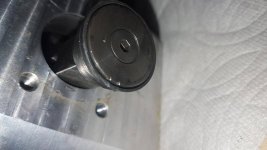I looked into getting one to Vancouver, it'd cost about $300 to get it there with UPS. I don't think I can afford to do that right now, but I also don't know what to do about this thing. I would like to get it usable. The bearings I posted pictures of are 6908RS bearings like ripcity said.
Ripcity, have you operated the pump at all with those ceramic bearings?
Ripcity, have you operated the pump at all with those ceramic bearings?



